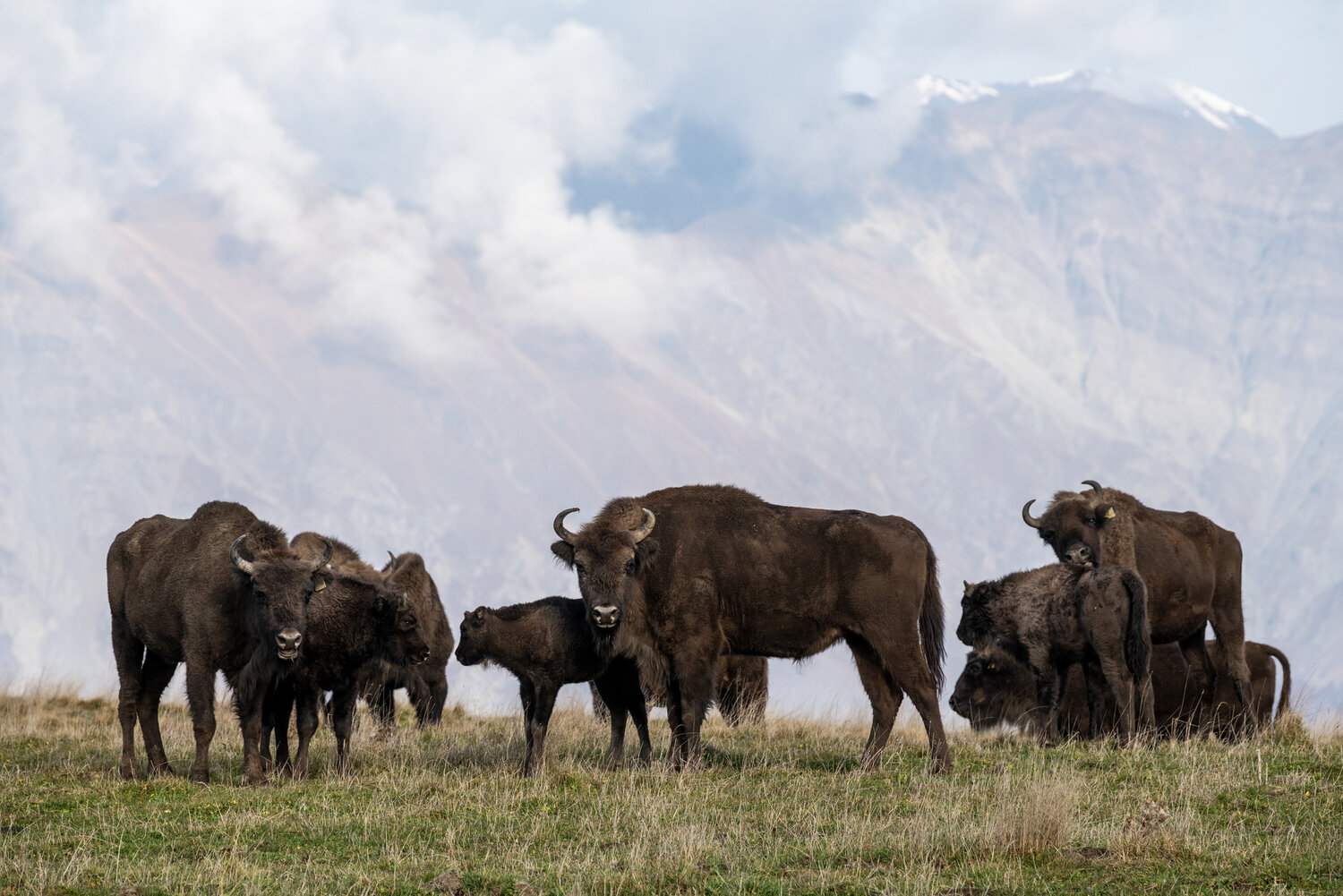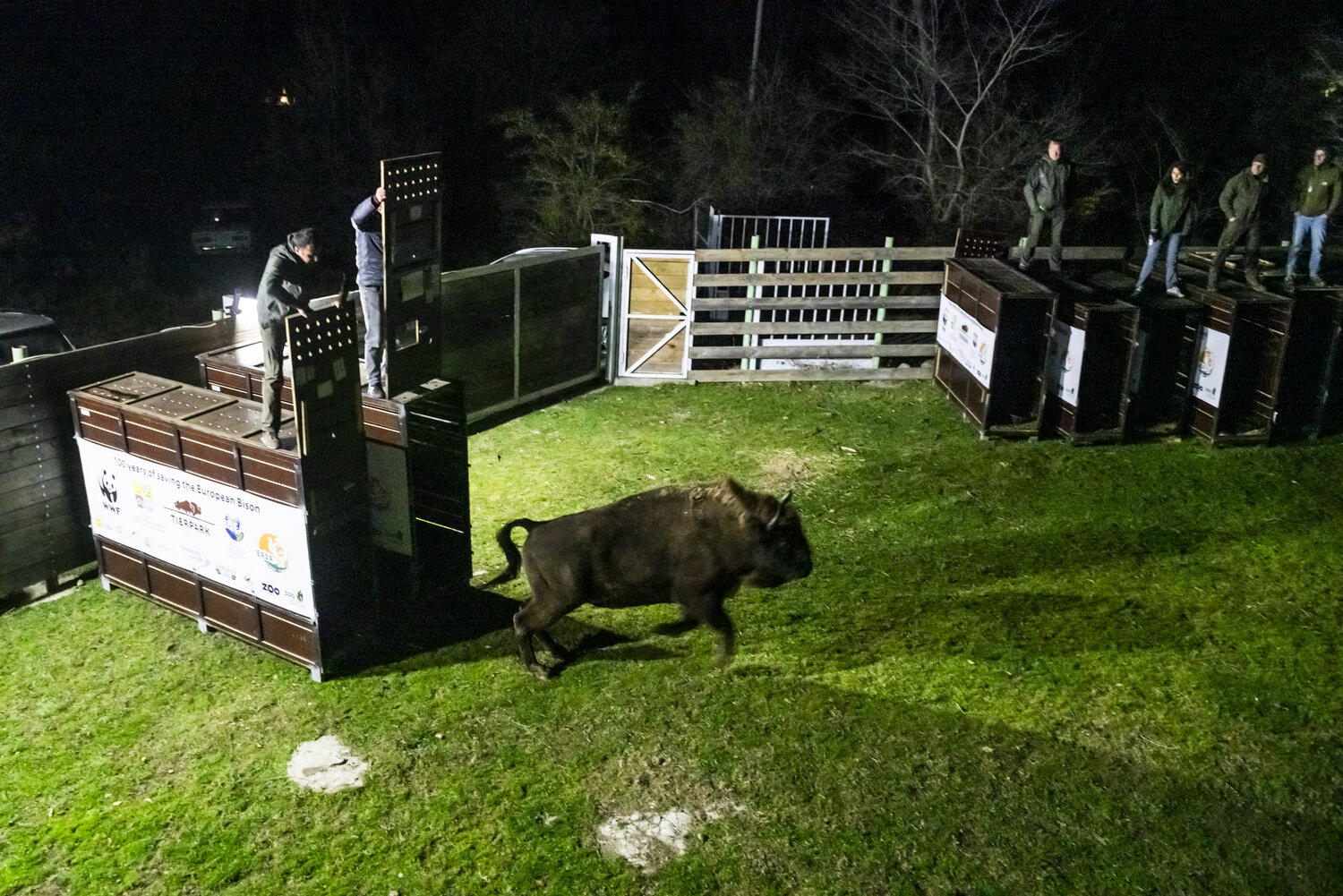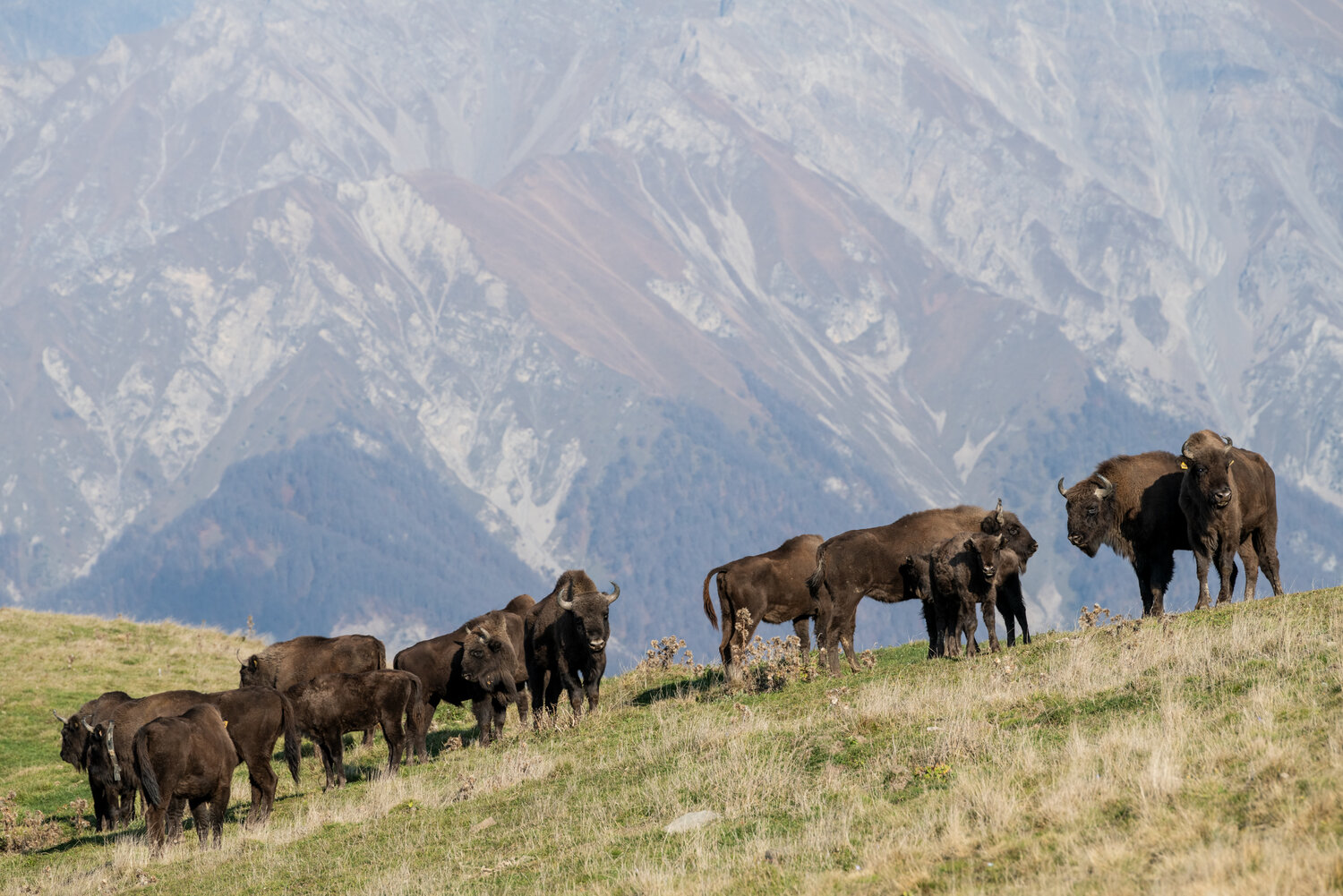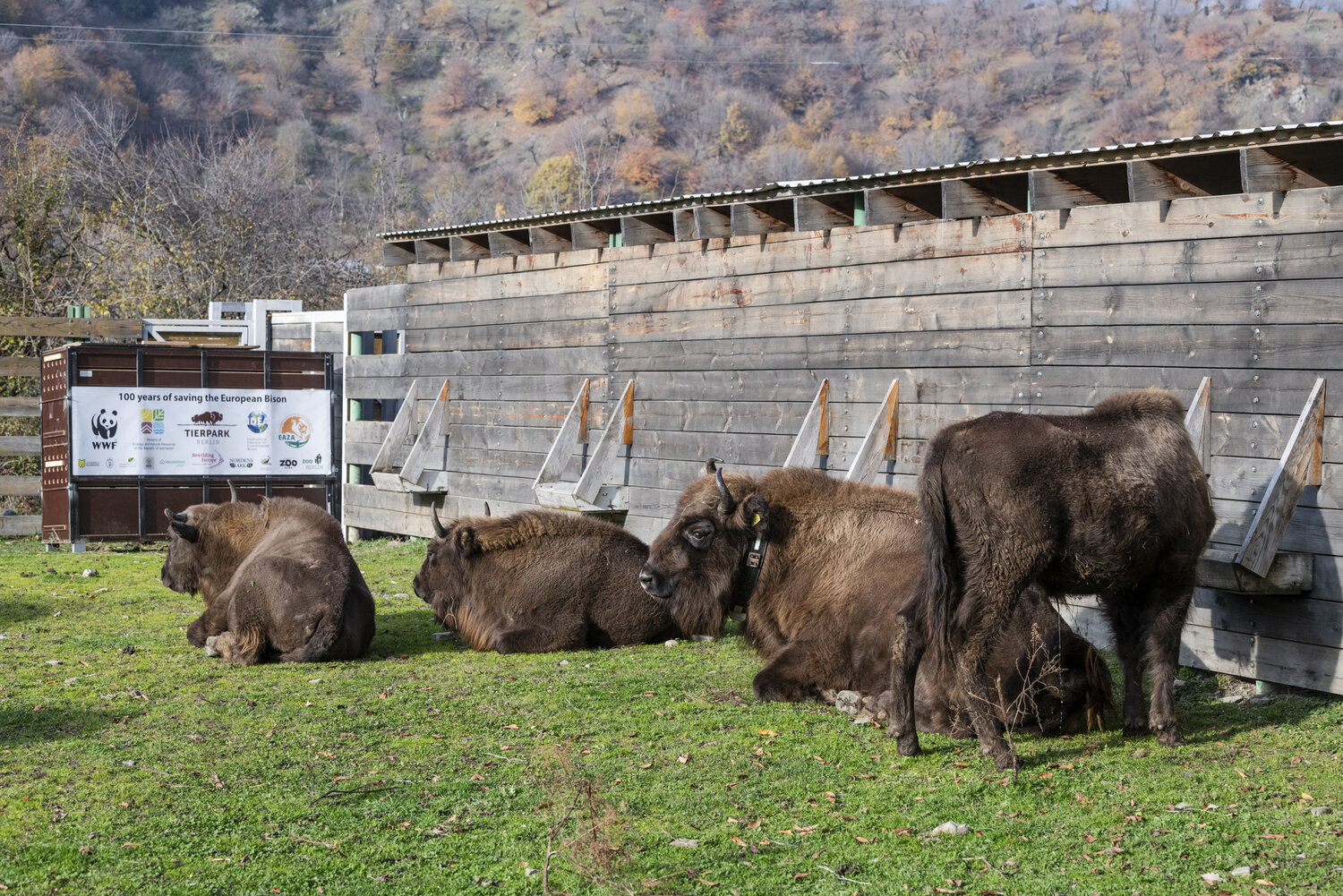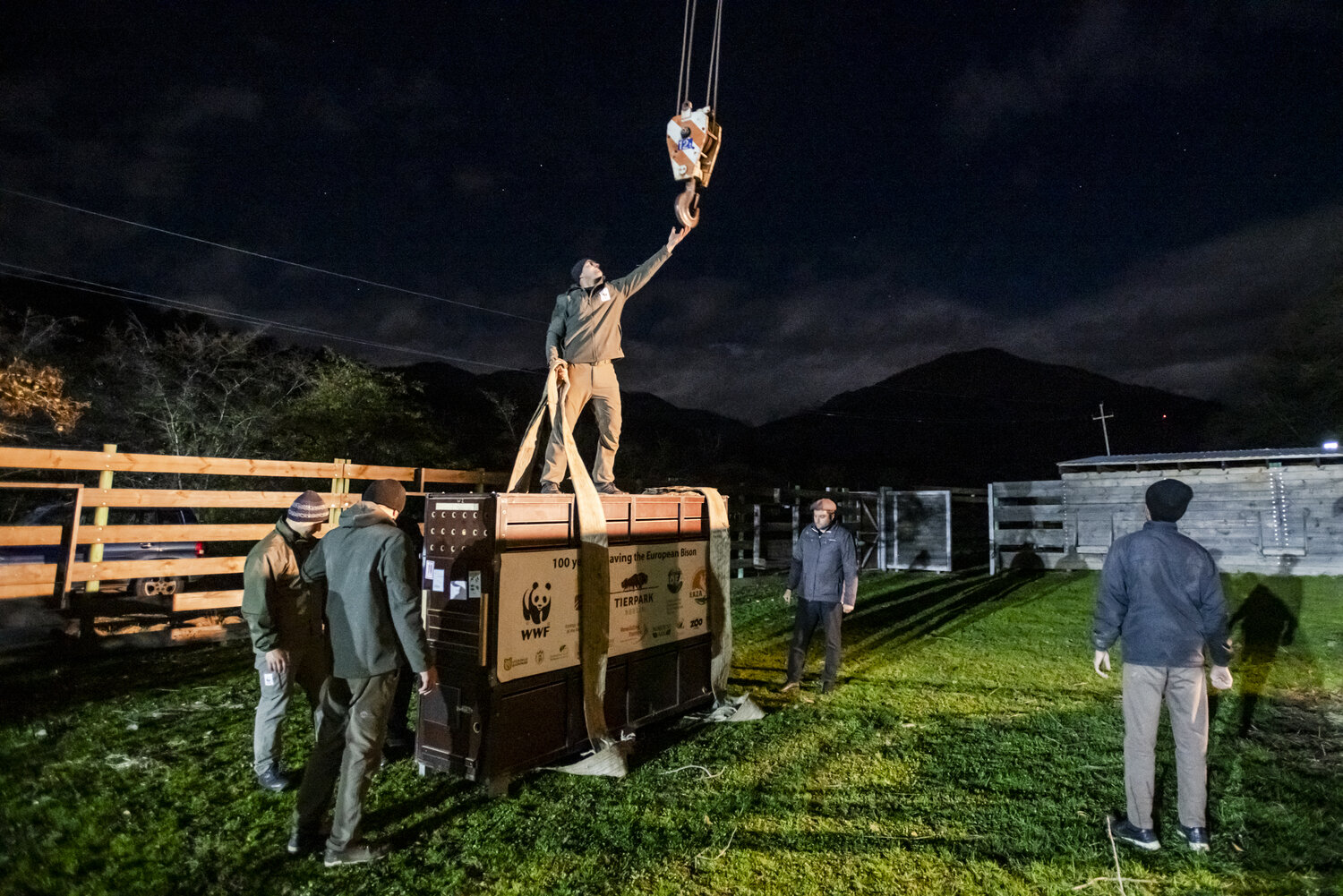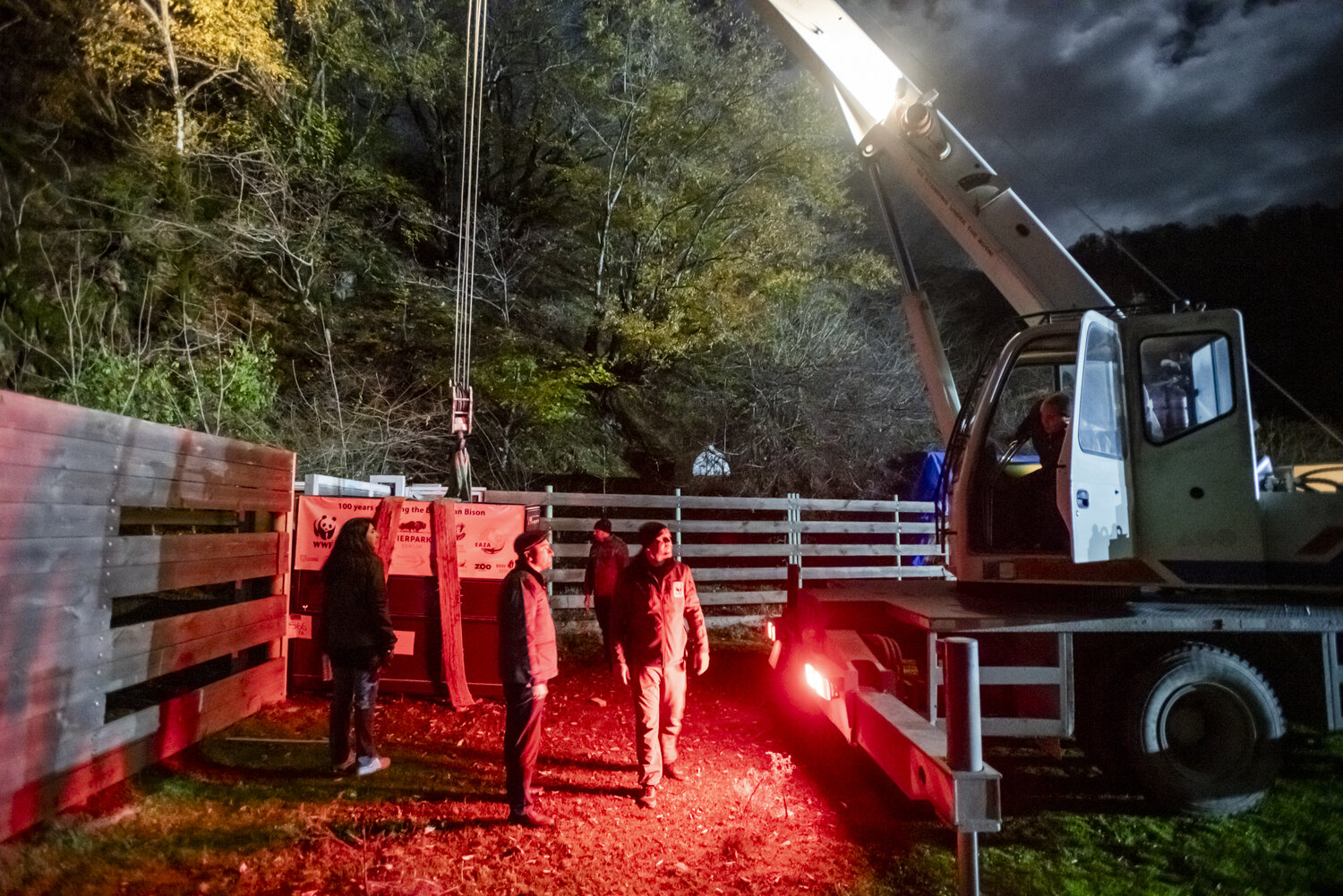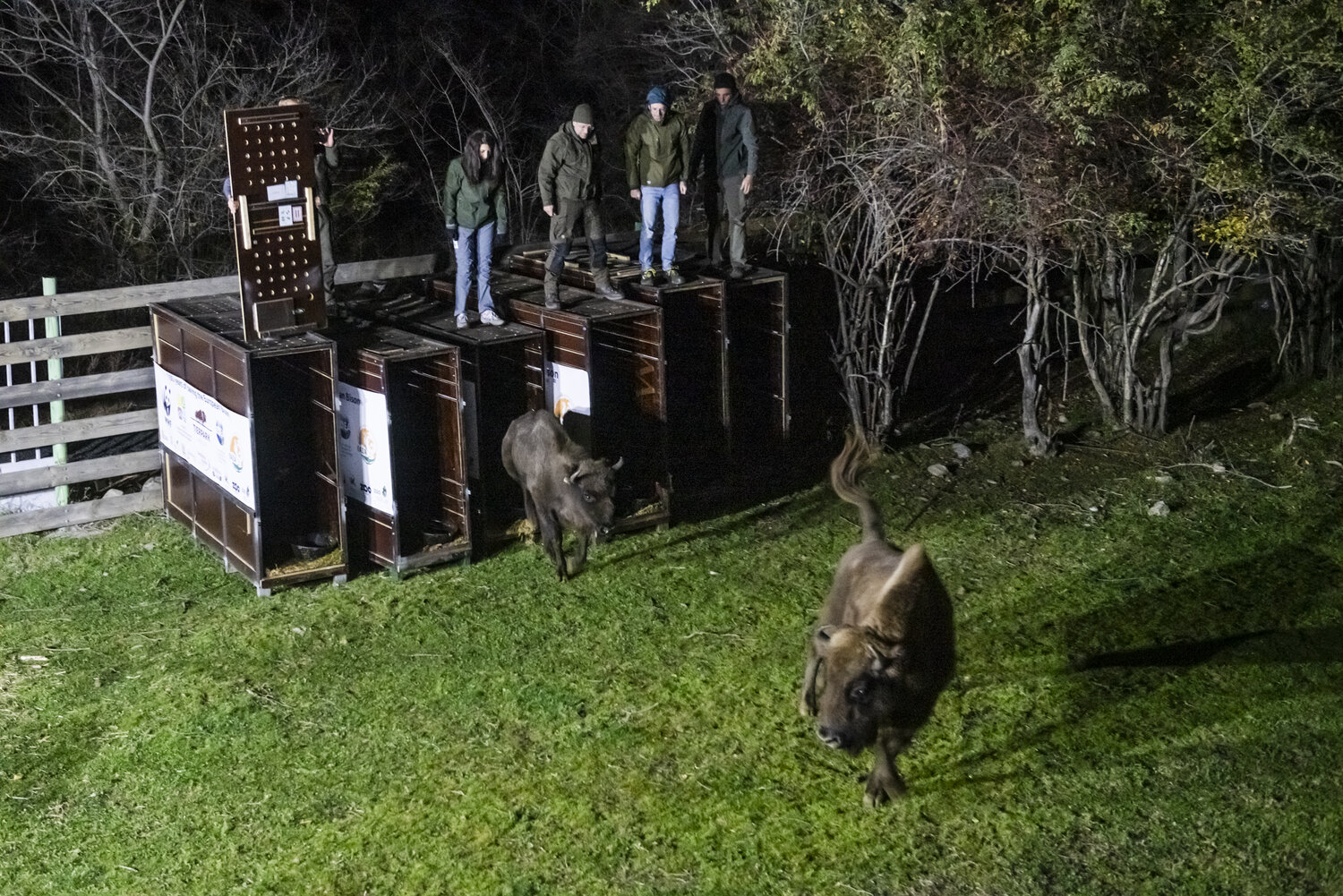A large truck carefully makes its way out of the Tierpark along a wide path lined with golden foliage. As the vehicle joins the traffic beyond the gates, no other road-users would guess that it contains nine large, shaggy bovines. These animals are on an important mission: to assist in the reintroduction into the wild of the European bison. Once extinct in its natural habitat, the biggest land mammal in Europe is now experiencing one of the greatest comebacks in conservation history.
The nine bison left Tierpark Berlin on 21 November for their new home in Azerbaijan’s 130,508-hectare Shahdag National Park. They were joined on their trip by experts from the Tierpark and conservation organisation WWF. Originating from zoos in Germany, Sweden, Romania, France and Czechia, the bison were first brought together at the Tierpark in order for them to get to know one another and become a herd. The group includes female bison Tines, born at Tierpark Berlin.
At Frankfurt-Hahn Airport, the nine bison were joined by another individual from the Alte Fasanerie wildlife park in Hanau. The group of ten then set off together on their very special journey. “The story of the European bison is one of the most encouraging in modern species conservation, but action is still needed to secure its long-term future in the wild,” says Christian Kern, Zoological Director of Zoo and Tierpark Berlin. “One of the project focuses is to establish large individual populations and then bring those together. This successful transportation of ten more bison was another successful step in the rescue plan for the threatened species.” In 2019, Zoo and Tierpark Berlin teamed up with WWF Germany to start returning captive-born European bison to their natural habitat in the Caucasus. So far, the reintroduction project in Azerbaijan has released 36 bison in the core zone of Shahdag National Park. The reintroduced bison have already produced young, and the population currently stands at 50. By 2028, a total of 100 bison from European zoos will have joined the project to ensure the establishment of a stable population in Azerbaijan.
“All ten animals coped well with the trip and arrived at the national park safe and well,” reports Aurel Heidelberg, Caucasus Programme Manager at WWF Germany. “The herd are currently in an acclimatisation enclosure and are expected to be released into the core zone of the national park in the spring of 2024. A project like this is an enormous undertaking that is only possible thanks to long-term, trusting collaborations between international, national and – very importantly – local partners.” Alongside Heidelberg and Kern, veterinarian Dr André Schüle accompanied the bison, ensuring they did not want for anything along the way.
“The history of the European bison is inextricably linked to Berlin,” explains Zoo and Tierpark Director Dr Andreas Knieriem. Even before the last wild bison was shot in the Caucasus in 1927, wiping out the species in its natural habitat, Berlin had already become the cradle of its revival: on 25 and 26 August 1923 committed experts met at Zoo Berlin to found the Society for the Protection of the European Bison. “This year, international bison experts came together at Zoo Berlin to celebrate the 100th anniversary of that crucial event and the successes that have been achieved so far,” says Knieriem.
For the long-term success of the project, Tierpark Berlin has joined forces with Rewilding Europe. This non-governmental organization operates across the entire European continent with the aim of promoting the extensive restoration of natural ecosystems and supporting the comeback of wildlife in Europe. The organisation's goal is to see rewilding practiced at scale across Europe by creating 15 wilder, diverse and resilient landscapes by 2030 that serve as inspirational examples. "We at Rewilding Europe are proud to support the return of European bison in Azerbaijan's Caucasus mountains. As the largest living wild mammal in Europe, bison play a critical role for their environment and bringing back this iconic species will have wide-ranging ecological benefits for the region,” says Sophie Monsarrat, rewilding manager at Rewilding Europe and manager of the European Wildlife Comeback Fund.
This alliance not only contributes to fostering biodiversity in Europe but is also an active contribution to the UN Decade on Ecosystem Restoration. Through the combined expertise of both organizations, the aim is to secure a sustainable habitat not only for Bison but also for other threatened species.
Background – The return of the European bison
The European bison was once found across large parts of Europe, but shrinking habitats and hunting meant that populations were in decline as early as the 11th century. In 1927, the last wild bison was shot in the Caucasus, leaving the majestic bovines extinct in the wild. It was thanks to the presence of just 56 individuals kept in zoos that the European bison was saved from total extinction. All the members of today’s European bison population are descended from just 12 founding progenitors that came from Zoo Berlin, Zoo Frankfurt, Budapest Zoo, Schönbrunn Zoo, the Białowieża Forest, the Pszczyna bison reservation, and the Caucasus. In order to ensure the survival of the species, a group of European zoo directors and scientists founded the Society for the Protection of the European Bison in August 1923 at Zoo Berlin. This joint effort was the forerunner of many of today’s conservation breeding programmes for endangered species. Zoo Berlin has been home to European bison since 1872. The Tierpark has also made a considerable contribution to the species’ conservation since it opened in 1955. To date, more than 200 European bison have been born at Berlin’s two zoos. European bison are currently classified as “Vulnerable” on the IUCN Red List of Threatened Species. The global wild European bison population currently stands at 8,225 individuals. Next spring, another ten will join them.
Individual bison reintroduced in 2023
- Swoyce ♂ Nordens Ark, Sweden, born 7 June 2022
- Enjoyce ♀ Nordens Ark, Sweden, born 9 August 2016
- Bodette ♀ Boras Djurpark, Sweden, born 19 May 2021
- Xarin ♀ Zoologischer Stadtgarten Karlsruhe, Germany, born 17 May 2021
- Pesca ♀ Domaine Zoologique de Pescheray, France, born 24 May 2022
- Tines ♀ Tierpark Berlin, Germany, born 18 July 2021
- Uraya ♀ Zoopark Chomutov, Czechia, born 26 June 2016
- Ofdalma ♀ Târgu Mureș zoological garden, Romania, born 12 May 2021
- Peps ♀ Domaine Zoologique de Pescheray, France, born 2 July 2021
- Fadi ♂ Alte Fasanerie wildlife park, Hanau, Germany, born 15 June 2021
